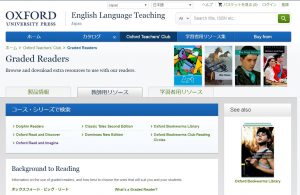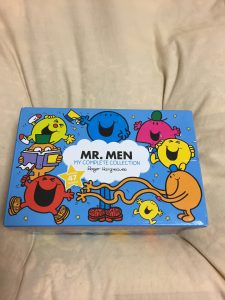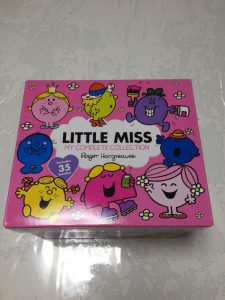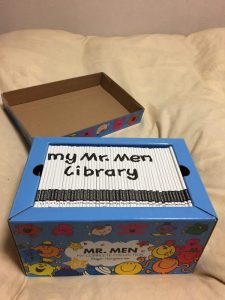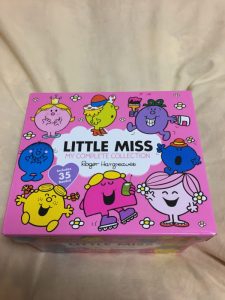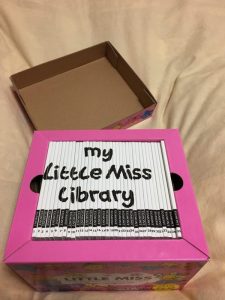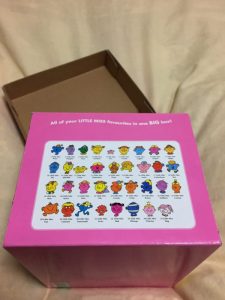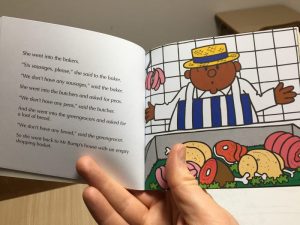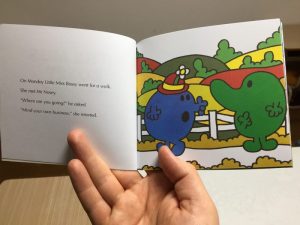curriculum junior high school language courses materials publishing
by sendaiben
2 comments
Three Types of Teachers
Perhaps more like three tendencies of teachers
I’ve been thinking about teachers a lot recently, and my own teaching experiences.
I’m starting to believe that there are three teachers archetypes. Few teachers will embody just one of them, but rather will be a mix of the three in different proportions. Maybe something like the introversion-extroversion scale.
So I believe there are ineffective teachers, individual-focused teachers, and system-focused teachers. Each of the points of the triangle above could be labeled with one of these, and all teachers could be shown as a dot inside the triangle.
In my experience most teachers (whether they are effective or not) tend to be individual-focused. They tend to think about the learner or relationships with learners. A few teachers are system-focused. They tend to think about curricula or classroom management.
The best teachers, the most inspirational, the ones that change lives, are highly effective individual-focused teachers.
The teachers that impact the biggest number of learners are highly effective system-focused teachers.
If I had to put myself on the triangle, I’d probably put myself here:
(the top point is individual-focused, the left ineffective, and the right system-focused)
After 17 years as a teacher I like to think I have become more effective, and I have definitely been drifting down and to the right recently.
I’ve been lucky to work with a highly effective system-focused teacher, Dan E., for the last few years. I’ve learned a huge amount from him and am still in awe of his skills and experience.
We’re currently working on a new project for junior high school students that is the most exciting thing I have ever done. I’ll be writing about it more as we get closer to completion.
So what do you think? Have you noticed the three types of teachers? Where would you put yourself in the triangle?
New Graded Readers from OUP
I got an email the other day with the list of new graded reader releases from OUP.
Basically:
- 2 new Classic Tales,
- 4 Dominoes,
- 4 Bookworms
- 1 Bookworms Factfiles
- 3 Bookworms Playscripts
- and a whole bunch of Read and Imagine titles.
To be honest, I was a bit underwhelmed.
The Read and Imagine titles are nice, as that series is finally coming together (but I still like Read and Discover better, as the content and difficulty are slightly better aligned).
Now that the Academy is taking off, and to address our perennial problem at Tohoku University, I basically want new books. Lots of new books, and ideally books that are not yet another rewrite of Romeo and Juliet, or Jane Eyre, or Hamlet, or whatever.
I mean, seriously, if ten other publishers have already done a version of a classic book, please don’t make more.
I know it’s cheap to adapt a classic, and people will buy it for the name recognition, but what really gets me excited now is new original content, both fiction and non-fiction.
I’ll order the Read and Imagine stuff and review it here at some point.
Anyone else sick of the endless rewrites?
REVIEW: Mr. Men and Little Miss Books
Really great. Much better than I expected!
I got these two boxed sets recently to add to our library at the Cambridge Academy. However, before I could use them with our students my granddaughter got her hands on them and insisted I read them all to her first -they are now her favorite books by far.
I’ve turned into a big fan too. I’ll run through what I think of each set briefly, then talk about how they might be used in a program.
The Mr Men My Complete Collection box contains 47 paperback Mr Men books in a very cool box.
The books are a bit hit and miss, but most of them are really entertaining.
My personal favourites are Mr. Tickle, Mr. Greedy, and the surprise hit Mr. Dizzy. We loved Mr. Dizzy because it contained several riddles aimed at young children, and Alyssa was thrilled to be able to answer them.
In fact, all the Mr. Men and Little Miss books are aimed at children, introducing slightly more adult vocabulary and frequently speaking directly to the reader, encouraging them to interact with the books. They also contain little moral lessons, but this is not too overwhelming.
The Little Miss My Complete Collection is similar, consisting of 35 paperback Little Miss books.
To be honest, I was a bit worried these would be very dated, or sexist. So far that has not been the case. We’ve only read half a dozen of these, but already I’ve found a couple I love: Little Miss Magic (where Mr. Tickle’s arms get shrunk) and Little Miss Hug.
In fact, I think the Little Miss books might even be better, because they tend to feature other characters and integrate them into the stories. Somehow they work really well.
From an ER library perspective, word counts and YLs for both the Mr Men and Little Miss books are in the Tadoku Kanzen Guide (with just a couple of exceptions for each box -the newest books). There is no audio, but I am planning to record our own -this would be a ‘two birds with one stone’ situation, as I could then give a copy to Alyssa too 🙂
The books are all YL1.5 or so, and 500-800 words, with simple stories and occasionally challenging vocabulary or grammar. The language is slightly old-fashioned, and some of the character names don’t mean what I originally thought they meant. Mr. Dizzy, for example, is actually stupid rather than off-balance, and Mr. Mean is stingy rather than bad-natured.
Here are a couple of pages to show the kind of language used:
Still, for the beautiful artwork and the wonderful stories, I really recommend this series. I can’t wait to introduce them to our students, and am even looking forward to making the audio for each one.
Does anyone else have these books? Anything to add?
The 2016 That Was
I like the end of the year. I normally have a few days off, and it’s a good time to reflect.
Since 2013 I’ve been doing annual reviews and plans. This is a wonderful habit to start if you’re not doing it already. Really helps you think about what you want to be doing with your hours.
This year has been pretty quiet here at sendaiben. I’ve been putting most of my blogging energy into my personal finance site RetireJapan so there haven’t been as many posts here.
In fact, I only wrote 38 posts this year.
Teaching-wise, 2016 was quietly successful. My university classes are pretty nailed down, but we still managed to come put with some solid improvements for our extensive reading and discussion classes on last year.
The Cambridge Academy developed a lot this year, and next year is looking extremely promising too. We should have finished our homebrew curriculum for 1st-year junior high school students in time for the April start. I will, of course, be keeping you posted.
How was your 2016?
Academy business curriculum extensive reading high school JHS junior high school language courses Language learning school management SHS
by sendaiben
6 comments
Cambridge Academy: December 2016 Update
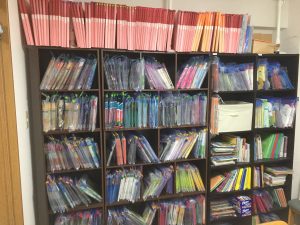
Academy beginner book section (YL0.1-0.7)
You can read about the Cambridge Academy in previous posts:
- Extensive Reading for Secondary Students (April 2015)
- Six Months In (September 2015)
- Year One (February 2016)
- Looking at Year Two (March 2016)
- Stocktake (March 2016)
- Shadoku explained (April 2016)
- Some improvements to the curriculum (April 2016)
Well, a lot has happened since my last post about the Academy (July 2016). We have had several schools visit, and I have talked to lots of people, and I have realised that in order for someone to start a program like the Academy in a school, the following four conditions are necessary:
- the desire and autonomy to begin a program
- the knowledge of ER to explain it to teachers, parents, and students
- a critical number of junior and senior high school students
- a large amount of money for books
So far I haven’t talked to anyone with all four of these, so we are putting our plans to license our system on hold. After all, if there are no potential customers it doesn’t make much sense to develop a product, right?
I’m still very happy to answer questions and give what advice I can though -feel free to leave a comment on this post or drop me an email.
Progress Report
We’re approaching Year Three for the Academy, and a lot is going well, and some things are going less well. We haven’t seen the growth I was hoping for (100 students are still out of reach), but we have a solid 70-some and next year is looking somewhat hopeful to break three figures.
1. Shadoku/Students that didn’t do shadoku last year
Our new first year reading curriculum incorporating shadoku is working extremely well. This year’s first year students are possibly doing better than last years’ (who are now second years). The second years are struggling a bit and I am trying different things to help them out, including having them re-read at a much lower level, etc. Not sure if the situation can be fixed completely, but at least we’ll do better going forwards.
We’ve also bought a lot of new books, particularly at the intermediate and advanced levels. Still not enough, but much closer to being able to meet our students’ future needs.

Academy intermediate book section (YL0.8-2.9)
A few of our students are really taking off with their reading, breaking the YL2.0 barrier and becoming more independent and motivated readers. It’s wonderful to see.
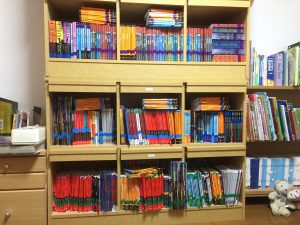
Academy advanced book section (YL3.0~)
I would say that somewhere over half our students are doing really well, and most of the others are doing okay. Maybe 20% are not doing well, and I hope some of them can be salvaged. Most of the ones who are not doing well started off badly, and I wasn’t skilled enough at the time to notice or help them.
2. Student reading targets
I’ve also noticed that students that read a certain amount are doing well, and those that read less are not. Using this data, I have come up with provisional weekly targets that we’ll start using next year with our students:
JHS1 2000-5000 words a week (100,000-250,000 words a year)
JHS2 3000-7000 words a week (150,000-350,000 words a year)
JHS3 4000-10000 words a week (200,000-500,000 words a year)
SHS1 4000-10000 words a week (200,000-500,000 words a year)
SHS2 5000-15000 words a week (250,000-750,000 words a year)
SHS3 6000-20000 words a week (300,000-1,000,000 words a year)
Based on these a student that joined our program in JHS1 and stayed with us until the end of high school would read 1,200,000 to 3,350,000 words. I predict this would provide them with some pretty decent English skills. The targets include in-class reading as well, so students with decent reading speeds might be able to clear the target just by reading in class for 55 minutes a week.
These numbers are provisional and we’ll probably adjust them after working with the students a bit next year. Looking at our current student data though, they seem reasonable. For comparison, in my university classes I require students to read 8,000 words a week to pass the course and 25,000 words a week to get a top grade.
3. Original junior high school output (speaking and writing) curriculum
We’re currently working on making our own curriculum for junior high school students for the output (speaking and writing) classes. As I mentioned in the improvements to curriculum post, the output classes have actually proven to be extremely important, and in the future we’ll be recommending students take both classes if at all possible.
Reading classes are much more profitable, but so far the results of students that only take reading are not satisfactory so we’ll have to abandon that idea as a profit centre 🙂
We should have the original curriculum for JHS1 ready to try from April, and then develop year two in 2017 and year three in 2018. Using the new curricula, we will now place junior high school students in their equivalent year class instead of trying to stream them by ability. High school students will be streamed by ability/level.
4. Assistant teachers
We have a couple of assistant teachers this year. They were students in the program last year, and are now attending local universities. We asked them to help us out as part-time staff.
The huge advantage of recruiting assistants like this is that they are very familiar with the system. It’s a win-win: we get dependable and skilled assistants that we know and trust, and they get to continue their English studies while doing fairly well-paid and interesting part-time work.
Best of all, this model should be fairly sustainable: I would expect we’ll have at least one suitable student per year graduating and we can keep them for four years while they are at university.
5. The next steps
Right now we need to do a few things before the end of the year. I would like to write a student guide to the curriculum that explains what they need to do. I think this will help students and their parents get more out of their classes.
We also need to buy some more books, although we can probably slow down a bit now.
Another stocktake will have to happen at the end of the year and book purchases to fill in holes.
We’re going to need more shelves soon too.
We’ll also be taking over another school and inviting their students to join our program from April. Hopefully this will build up our numbers a little bit.
All good stuff. I’m really looking forward to how the Academy develops as we go into our third year.
Anyone else working on extensive reading systems? Any questions or comments?


